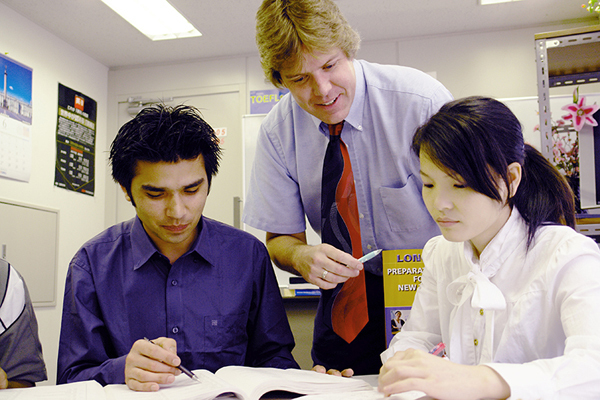TOKYO — I was working at my junior college as usual on a crisp, but sunny Friday afternoon, anticipating a relaxing weekend. I was alone on the second floor doing the important work of a dean — ordering the curriculum materials for the coming year (which starts April 1 in Japan).
With book order in hand ready to feed the fax machine, the first shockwave started, and although such earthquakes happen often in Japan (such as Wednesday’s near Miyagi Prefecture, northeast of Tokyo), this one soon became very different.
The shaking quickly became extremely violent, and soon the entire building was rocking back and forth, with glass creaking like it was ready to burst.
Staff screamed and got under desks, and I grabbed a support column near the elevator, which had automatically shut down. I remembered the recent Christchurch, New Zealand, quake, when only the elevator shaft was left standing in one downtown building.
What was most alarming was that it didn’t stop after a few seconds, as is usually the case. It just kept going and going and going, and every few seconds it got really bad, when we thought the building might come down.
It wasn’t just a rhythmic back and forth as is normal in earthquakes, but felt like the whole area was being pushed to the northwest in suddenly larger and more violent strokes. Thoughts of mayhem, death and a feeling that this is that big one we had always feared flowed through my mind as I anticipated the ceiling crashing down at any moment.
“Stop!” “Stop!” “It has to stop; it always does!” were my clear and only thoughts.
Out on the street, the wires were dancing around and traffic light poles were bouncing back and forth like toys in the hands of children. Cars stopped and after what seemed like an eternity — actually three to four minutes — of nonstop shaking we made for the stairwell and joined thousands of evacuees pouring onto the streets, a few with tears in their eyes.
Tokyo is such a densely developed city that large parks and safe havens like ballfields are few and far between. The only safe places were in the middle of large boulevards — 10- to 15-story office towers line all the streets around Kanda in the heart of Tokyo.
The small park nearby was overflowing within minutes and a local crew with their familiar white hard hats and blue jumpsuits arrived to give initial instructions to the horde. TV choppers flew overhead. Word was that a fire had broken out by the bayside. One rumor had it that three workers had fallen off the enormous Tokyo Sky-tree Tower under construction nearby.
None of us knew quite what to do. I was with five or six students and a colleague who soon made his way to our very elderly president’s office to see if he was all right (he was). A huge 7-foot stone lantern had toppled in the park and a few buildings had lost tiles; you could see some minor cracks in sidewalks here and there, but the damage beyond that was minimal.
Eventually, people felt that it was safe enough to go back inside, even though aftershocks were substantial and coming in at about seven to 10 per hour.
Your mind plays tricks on you in these situations and after a while, you feel like you are constantly being rocked and look to antennae and the like for proof that another shock wave is or isn’t passing through.
We had all survived the largest earthquake in Japanese history, but those to the north and east unfortunately took the brunt of this major event.
The tsunami warnings were flashing nationwide, and the TV soon gave us the sad pictures of inundation and flames. At this time, there were still fears that a nuclear reactor might be in peril.
Thousands and thousands of people were left stranded within the city at train stations, Starbucks and the like, though many businesses, such as McDonald’s, had closed immediately. All trains and subways were instantly shut down across the Kanto Plain.
My colleagues made their way to any local shelter they could find — capsule hotels, love hotels, etc. I joined the thousands walking home, about 5 miles in my case.
My apartment looked as though someone had laid into it for five minutes or so with a baseball bat. I am cleaning out of the mess as I write, glad that this one didn’t get me or my friends. In the end, I can only conclude that we humans are feeble pawns in the hands of Mother Nature.
Thom Burns is the head English teacher at Tokyo English Specialists College. When home in Maine, he lives in Old Orchard Beach.
Send questions/comments to the editors.



Success. Please wait for the page to reload. If the page does not reload within 5 seconds, please refresh the page.
Enter your email and password to access comments.
Hi, to comment on stories you must . This profile is in addition to your subscription and website login.
Already have a commenting profile? .
Invalid username/password.
Please check your email to confirm and complete your registration.
Only subscribers are eligible to post comments. Please subscribe or login first for digital access. Here’s why.
Use the form below to reset your password. When you've submitted your account email, we will send an email with a reset code.